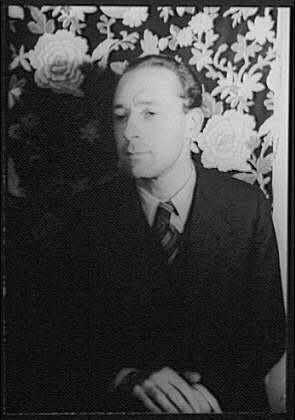Pavel Tchelitchew
Tchelitchew was born to an aristocratic family of landowners just outside of Moscow, in 1898. Educated by private tutors, he expressed an early interest in ballet and art.
Tchelitchew's family lost its expansive estate when the property was seized during the Bolshevik Revolution. They settled in Kiev in 1918 where Tchelitchew began receiving formal art training. Tchelitchew's early artworks and career path were greatly influenced by the private lessons and encouragement he received from Alexandra Exter, a pupil of Léger and director of the School for Painters and Stage Designers, and Isaac Rabinovitch, a Cubist-Constructionist artist who became one of the most famous theatre designers in Soviet Russia.
Pursuing a career as a designer, Tchelitchew left Kiev in late 1920 for Odessa where he designed several minor music hall productions. A year later he arrived in Berlin where he executed a series of commissions for stage design and costumes for theatre operas, ballets, and cabaret musicals. Impressed with his work, Russian ballet impresario Sergei Diaghilev asked him to come to Paris in 1923 to execute a commission. Tchelitchew would later design costumes and sets for several important ballet productions in New York City, including George Balanchine’s Errante and Orpheus.
Upon his arrival in Paris, Tchelitchew began to concentrate on painting. Moving away from the abstract influences he received in Kiev, Tchelitchew began painting more representational work especially landscapes and portraits of people from his rapidly expanding circle of influential friends. These included Glenway Wescott, Alice B. Toklas, Lincoln Kirstein, George Platt Lynes, and Gertrude Stein. Tchelitchew emmigrated to the United States in 1934 where he continued to evolve as a painter experimenting with perspective distortion, multiple images, metamorphic forms, and automatism (a technique of creating artworks from one’s subconscious without thought or direction). Many of his ideas came to fruition in 1942 in his major work titled Hide and Seek. The large painting, full of hidden images and the integration of human and vegetable forms, became one of the most famous and popular works at the Museum of Modern Art in New York through the 1970s. Tchelitchew died in Rome in 1957 with his long time partner, Mississippi poet Charles Henri Ford, by his bedside.
